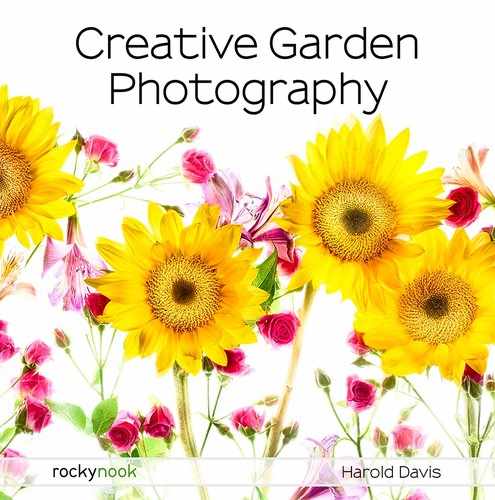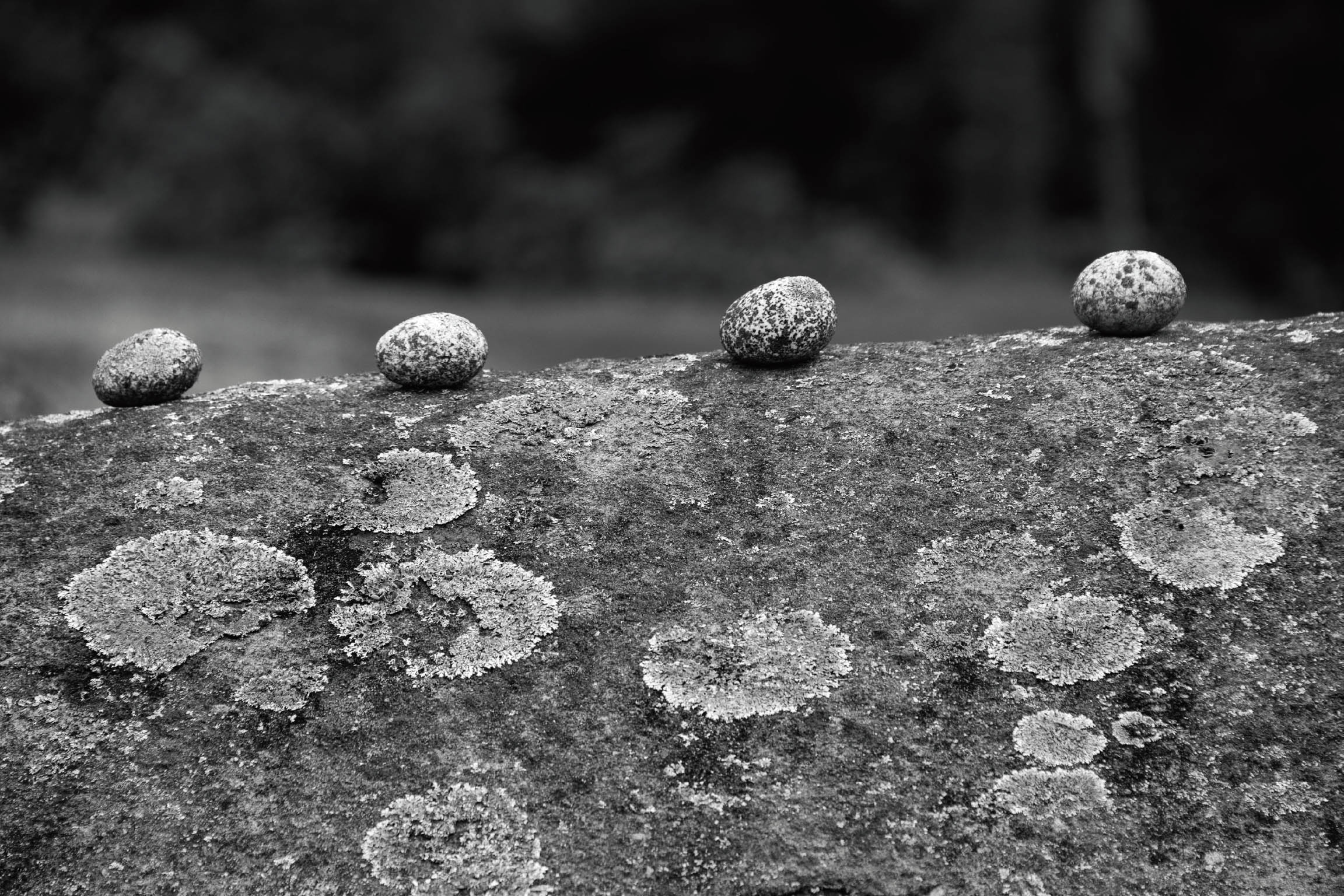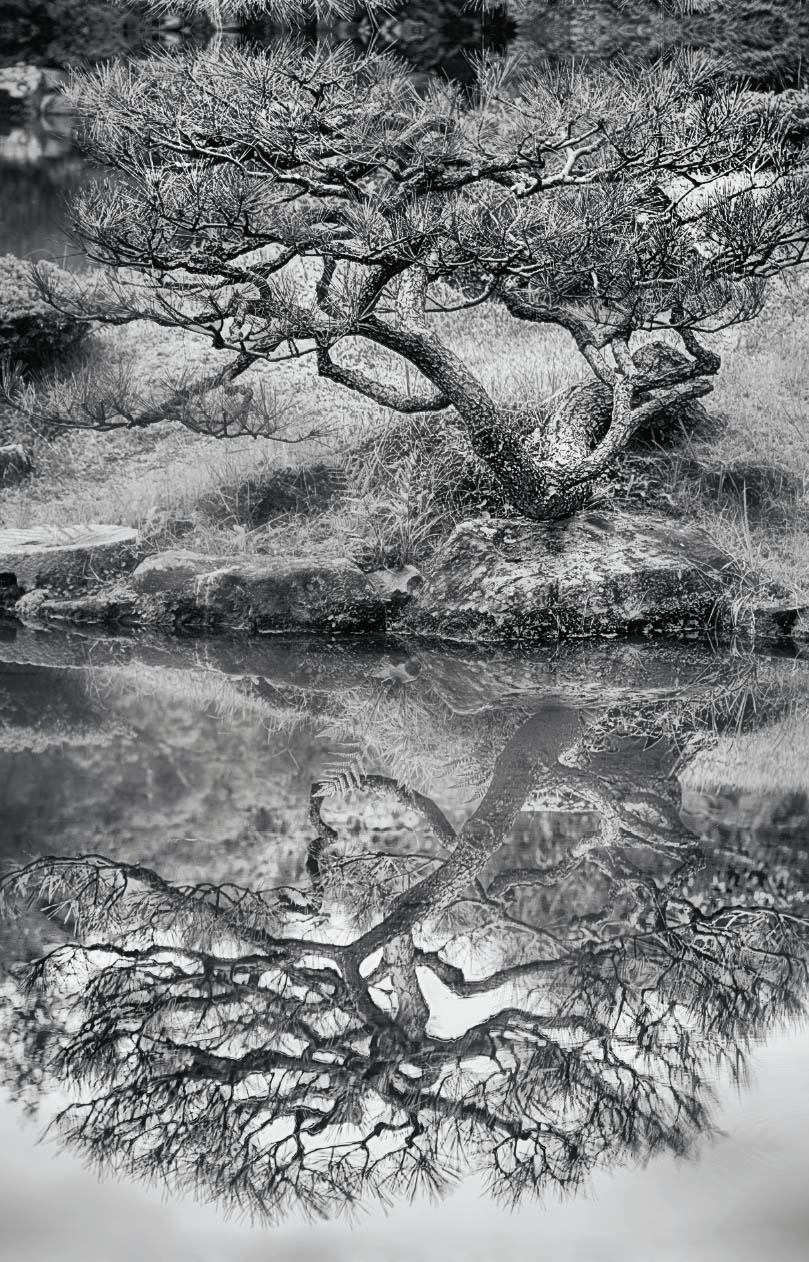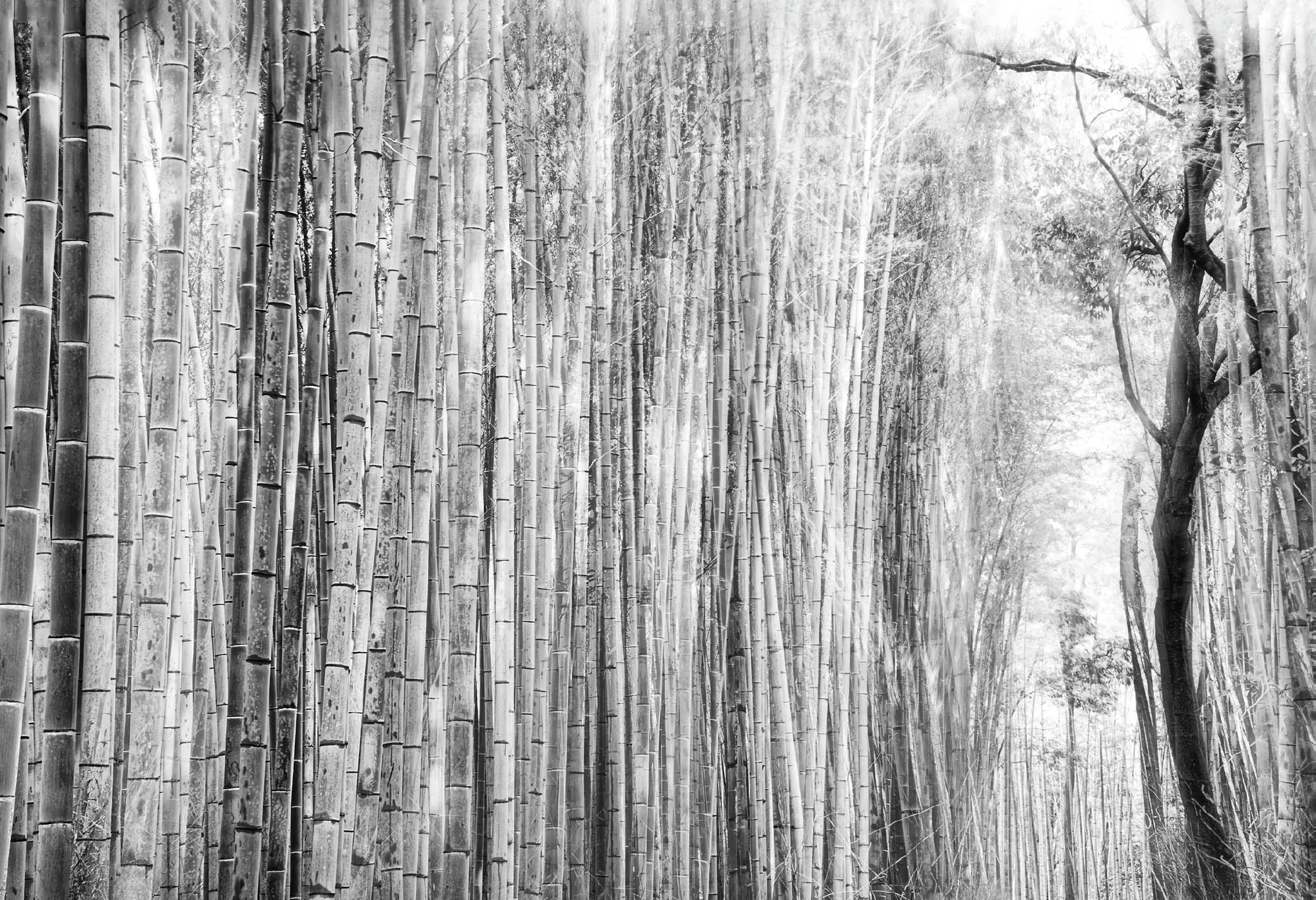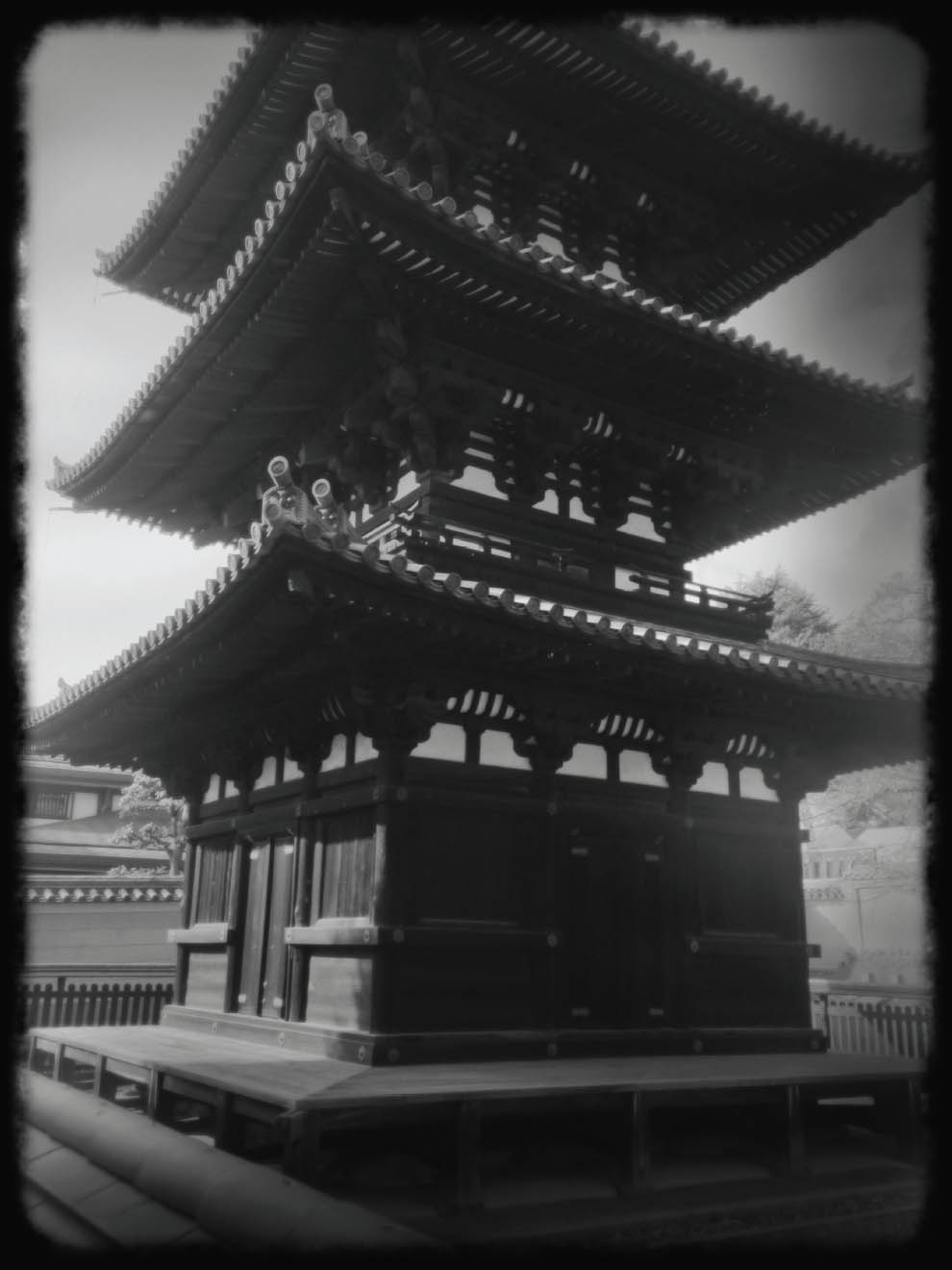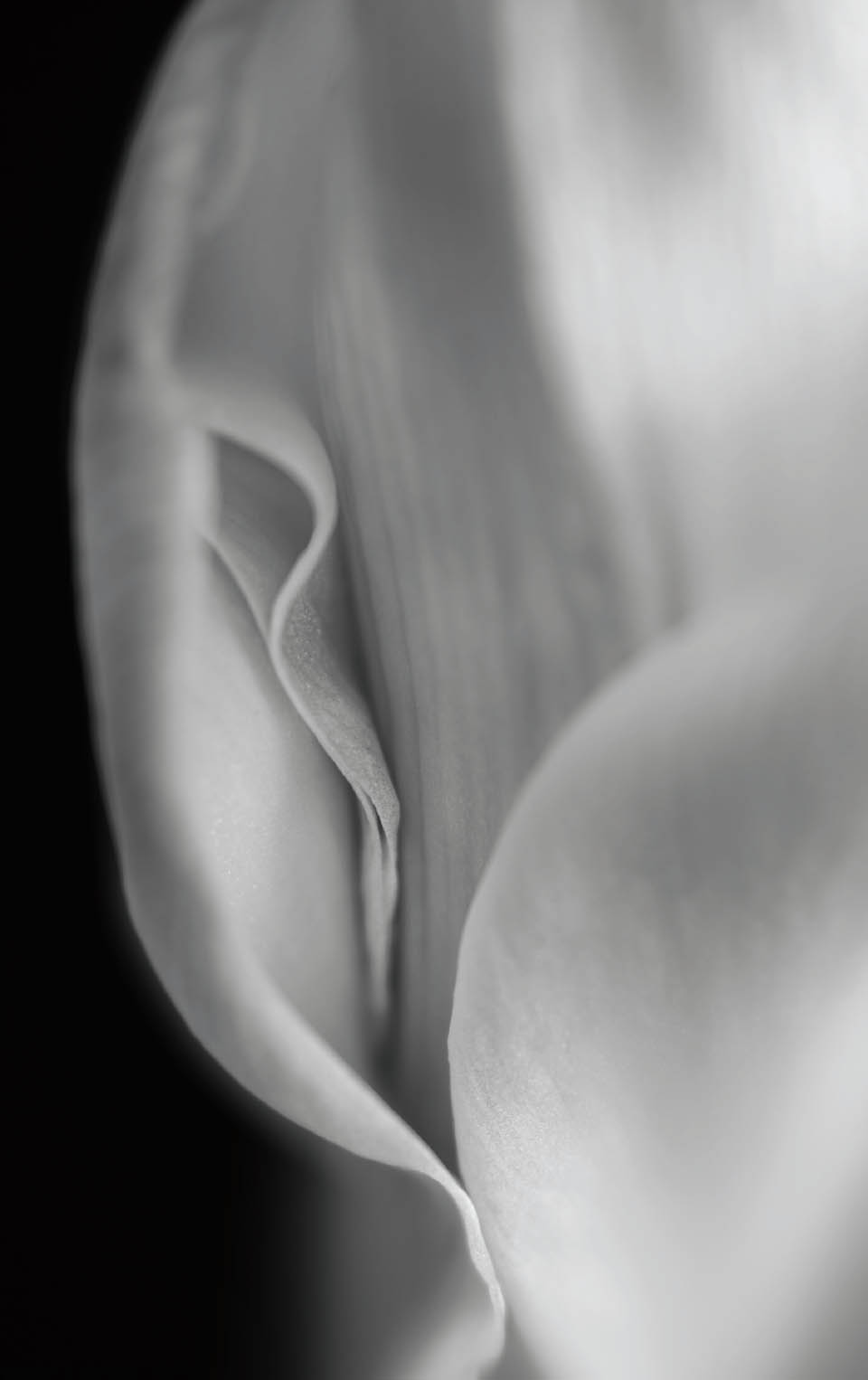The Garden in Black & White
When collectors are interested in my imagery of gardens, they often choose black and white prints. In addition, several of the garden photography assignments that I have had involve black and white photography.
It’s clear that black and white is very important to certain kinds of garden photography. Why?
For one thing, a black and white photograph is “art.” In the context of gardens, black and white has a long history of rendering the shapes, forms, and composition of the garden—along with the underlying idea of the garden plan—without the distraction of the seductive colors of floral beds.
Thinking in Black & White
Up until fairly recently, photography was only black and white. Color was not an option. Nineteenth-century photographers, such as Eugène Atget (1857–1927) who worked near Paris, used the prowess of their monochromatic cameras to capture gardens around the world with a particular emphasis on the patterns and structure of formal French gardens. To some extent, this embrace of the static in garden photography was driven by technology: not only was photography monochromatic, shutters were also slow, so capturing anything in motion was non-trivial.
As time went by, when color film was introduced, the great era of Kodachrome was on. Fast forward a few more decades, and the wet-film darkroom transitioned to digital. Not only is the default capture mode on most digital cameras or smartphones in color, to choose to render a garden image captured in color in black and white is an affirmative choice. In today’s world, to present an image in black and white is making a statement. The statements may well be: “Look at me, I am a work of art!” “I am special.” “I am the form and composition reduced to its essentials.” Of course, it also helps that black and white photography is simply beautiful.
So we already know that a monochromatic garden image is intended to be special. By the way, what is the difference between monochrome, and black and white? A black and white image is literally rendered in tones of black, white, and gray. A monochrome image is, at least in theory, only a single color. The color could be black and white, but it could also be virtually “toned”—for example, sepia-toned images are considered both monochromatic and black and white.
Monochromatic Ranunculus—I bought this beautiful, beguiling, blossom of a ranunculus at a local florist. Considering the pure whiteness of the petals, I knew I was going to make a monochromatic image.
To make my photograph of this complex flower, I placed it on a black velvet background. The flower was carefully lit so that only the petals were illuminated. I shot a bracketed sequence of five photos, which I processed together to present an attractive dynamic range across the entire flower.
Nikon D300, 85mm Nikkor tilt-shift macro, five exposures at shutter speeds ranging from 1/60 of a second to 1/6 of a second, each exposure at f/21 and ISO 100, tripod mounted; converted to black and white using Photoshop and Silver Efex Pro.
Here’s an interesting thing: In the digital world almost all black and white images start as color captures, and are actually the same kind of color file as a color image. In other words, they are generally saved on a computer as RGB files, and usually best printed that way as well.
The clear implication here is that not only are black and white images special, they are also an ideational construct. Meaning that for the most part, in the twenty-first century nobody is going to look at a contemporary black and white photo and say, “this is a real garden.”
Bench—The spectacular Abby Aldrich Rockefeller Garden in Seal Harbor, Maine, is surrounded by a wall with a formal entrance gate. Like much of the garden, the gate is in oriental style, and draws one’s attention. Indeed, gates and portals are one of the key design features of this garden.
So on my second visit to this garden with a workshop class, I found myself spending a great deal of time inspecting the main gate. But something that I could not put my finger on was interesting me, and it was not the formal gate.
I gave it some time and then I realized that the bench against the wall had an almost meditative aspect. I photographed the bench hand held with simplicity in mind.
Nikon D850, 50mm, 1/30 of a second at f/8 and ISO 500, hand held; converted to black and white using Silver Efex Pro.
Stones and Lichen (above) and Shingles (opposite)—About forty years ago, a sculptor by the name of Ken Cleaves started scouting rural Maine for an abandoned quarry that he could turn into a work of art. He found his dream location in mid-coast Maine about twenty miles inland from Camden. The quarry had been worked for granite until the 1930s, at which time it had become unprofitable and was abandoned. In addition to the partially-worked quarry, there were interesting topographic features, including several ponds, river frontage, and some great rocks lying around.
Ken named his new kingdom “Shleppinghurst” and commenced unassisted to carve his dream garden by hand from the hardscrabble Maine terrain. For the first several decades, he eschewed motorized equipment. He built in stages, living the first few winters in a tar-roofed shack until he could construct something more comfortable.
Ken’s ideal was simplicity apart from the modern world, sort of like a twenty-first century Thoreau. Shleppinghurst is not quite Walden Pond—Ken’s current house is comfortable and is connected to the internet—but a considered style of contemplative Zen can be seen and felt in every aspect of the garden, such as the rocks placed on a larger stone (opposite), and the hand-made shake patterns on one of the outbuildings that Ken built using hand tools (above).
Nikon D850, 300mm, 1/400 of a second (above) 1/100 of a second (opposite), both images at f/8 and ISO 400, hand held; converted to black and white using Photoshop.
Thap Rua—In Vietnamese, Thap Rua means “Turtle Tower.” Turtle Tower is a structure in the middle of Hoan Kiem Lake, a garden island of peace in the bustle of downtown Hanoi. Apparently, back in pre-history, a powerful dragon, a magical sword, and the Golden Turtle God joined to protect Vietnam from a vicious Chinese invasion. Turtle Tower commemorates the achievement of a scrappy, small nation standing up successfully to aggression.
Wandering downtown Hanoi with my camera on a foggy morning, I was struck by the quiet in the midst of one of the busiest cities in the world. I took a moment to meditate and then made multiple exposures to take advantage of the wonderful diffused light and fog. It was clear to me before I made a single exposure that I was looking at a black and white image.
Nikon D810, 230mm, five exposures at shutter speeds ranging from 1/10 of a second to 1 second, each exposure at f/25 and ISO 64, tripod mounted; converted to black and white using Photoshop and Silver Efex Pro.
To compensate for the remove that being an “artistic construction” makes, your black and white images should show considerable elegance. A black and white image that is inelegant or sloppy misses the point of rendering in monochrome.
Here are some of the other aspects of image making that I look for when I pre-visualize a garden image in black and white, or consider whether to convert a color image to black and white:
- Is the subject matter essentially a single color?
- Is color important to the content of the image?
- Does the image lend itself to the principles of formal composition?
- Are the lines, angles, and shapes in the image important?
- Does the image make excellent use of shadows, and in some cases, contrast?
- Does simplicity work well with this image? Complex floral beds are often not simple subjects, and may not render well in black and white.
Old Tree Roots in a Temple Yard—On the grounds of the Shoren-in Buddhist temple in Kyoto, Japan, are many ancient trees. This temple dates to the thirteenth century and the dignified, quiet gardens are intended to show the direct connection of Buddhism to the Earth.
Wandering in this temple was a wonderfully peaceful experience. At twilight I had it practically to myself. The roots of the camphor tree shown are believed to be more than 800 years old. It seemed to me as I photographed the massive tree roots amid strategically placed rocks that it was a perfect subject for black and white.
Nikon D800, 98mm, three exposures at shutter speeds at 2, 4, and 6 seconds, each exposure at f/32 and ISO 200, tripod mounted; converted to black and white using Perfect B&W.
Previsualizing in black and white is a learned skill. It’s not the same thing at all as being color blind. You need to look around at the world and consider the possibilities for how the colors can be rendered into grayscale.
This is not always obvious. In the old days, a filter used at the time of exposure or on the enlarger could change the way the colors of the world appeared as black and white. In today’s digital world, virtual filters do the same thing—and these can be applied selectively, so different renderings of color to black and white can coexist within the same image.
One useful tool in previsualizing exists in your camera. This is the possibility of either previewing or doing an in-camera monochromatic conversion. While an in-camera monochromatic conversion is not likely to be very high quality, it can give you a spot-on idea of how likely black and white is to work in a specific photographic situation, showing you how the conversion from color would work in monochrome.
Tree and Reflection, Nara—Before Edo (now Tokyo) was the capital of Imperial Japan, Kyoto was the capital. And before Kyoto, the Imperial capital was Nara in the foothills of the mountains of the Kii Peninsula. Within the formal gardens in Nara, it’s possible to visualize both the constraints of an ancient civilization and the wild and informal aspect of nature. I found this tree and it’s reflection in a pond in the Isuien Garden, which dates in its current design from the Meiji Restoration of the 1860s.
Nikon D800, 180mm, four exposures at shutter speeds ranging from 1/40 of a second to 1/6 of a second, each exposure at f/10 and ISO 100, tripod mounted; converted to black and white using Photoshop.
Converting to Black & White
With rare exceptions, there’s no such thing as a black and white capture. (The Leica M Monochrom is the exception that proves the rule since it only makes black and white photos.) When you go out to make a photograph, provided you are photographing in RAW, as I do strongly suggest for quality, there is only the single or multiple RAW files, and these files are the same; they are neither color nor black and white.
Furthermore, after you are through with the conversion process to black and white in post, the file structure of the black and white image is still the same as a color file—namely, it is an RGB file, ready for reproduction on the web and fine-art printing, and a CMYK file prepared for offset reproduction.
Figure 12 to the left shows the best practices for most black and white conversions.
As I mentioned, a RAW file is inherently neither color nor black and white. You start with either a single RAW capture or multiple RAW captures for extended dynamic range (see pages 169–189). Using RAW conversion, multi-RAW conversion, HDR, or hand-HDR, the file is converted to color.
Note that most RAW conversion programs, such as Adobe Camera Raw (ACR) and Lightroom Classic, provide a mechanism for direct conversion to black and white without passing through the color conversion stage. I do not recommend this, as these black and white conversions provide neither quality nor flexibility.
Secret Garden—In the gardens of the Château de Hautefort, an impressive castle in the Dordogne département of southwestern France, reconstructed in the seventeenth century and embellished with a very well-known jardin à la française.
Wandering through this spectacular garden, I came upon a window in a wall of ivy, framing a round door across an open flower bed. The roundness of the opening in the ivy seemed to echo the round door, and the round globe sculpture in the mid-ground, so I emphasized the effect along with the general archaism of the image by adding rounded corners and converting to sepia-toned black and white.
Nikon D800, 116mm, four exposures with shutter speeds ranging from 1/5 of a second to 2 seconds at f/36 and ISO 100, tripod mounted; converted to black and white using Photoshop and Perfect B&W.
Prague Architectural Study—I wandered in the Schönborn Garden on the heights above Prague in the Czech Republic. At the border of the garden, my lodging was on the grounds of the great historic Strahov Monastery. So perhaps the thinking of the monks who lived there over the ages influenced me, along with their homemade beer. In any case, I decided to make a series of rectilinear architectural studies in the Prague area. This garden path struck me as the perfect subject; with its contrasting light and shadow, it seemed made for black and white.
Nikon D810, 150mm, 1/500 of a second at f/14 and ISO 320, tripod mounted; converted to black and white using Photoshop.
Even if you know you want to present your image in black and white, it makes sense to process your image to color, sometimes exaggerating contrast and saturation. The result may not be a great color image, but the added information in the color file gives black and white conversion programs a great deal to work with. This is a particularly important technique if you intend to do differential and selective black and white conversions, so that not all portions of the image are converted in the same way.
Once you have processed the image to color, the next step is to convert the image to black and white. I recommend using a program, such as Adobe Photoshop, that allows you to use layers and layer masks to selectively convert different portions of an image. This workflow produces a black and white layer stack where each layer in the stack is created using different black and white conversion settings, techniques, or plug-ins. The layer masks associated with each layer control which areas of the photo are converted by which method.
High-quality conversion tools that are often used include:
- Lightroom Classic Black & White presets
- Photoshop Black & White adjustment layers
- Nik Silver Efex Pro from DxO
- Topaz B&W Effects from Topaz Labs
- Perfect B&W from On1
Once you are happy with your black and white conversion layer stack, the stack should be archived. Next, merge down the layers and save a master file for your black and white image. The best practice is to save the master file in a wide gamut; for example, as a ProPhoto RGB TIFF or PSD file.
Finally, additional files are created depending upon how you will be using the image. Usually I create and archive a single file for each purpose; for example, a JPEG file for posting on the internet, and a TIFF file profiled for each specific paper type that I am using for fine-art printing.
Within the Bamboo Forest—The Sagano Bamboo Forest in the Arashiyama district on the outskirts of Kyoto, Japan, is a popular tourist destination, and often the venue for weddings. This beautiful and ancient bamboo forest is surrounded by gardens, temples, and tourist attractions. Listening to the bamboo’s rustle in the wind is like no other sound, although it does take a bit of doing to find a secluded location where the sounds of the forest come through.
As forest gardens go, this one is sparse, unsentimental, and uncluttered. How Zen! It is kind of amazing that the Sagano Bamboo Forest has become so popular.
Approaching the Bamboo Forest as a photographer, I decided to ignore the crowds and render the simple-Zen elegance of the bamboo trees, which came though for me loud and clear when I used black and white.
Nikon D800, 92mm, 13 seconds at f/22 and ISO 50, tripod mounted; converted to black and white using Photoshop.
Pagoda—Kofuku-ji is a Buddhist temple pagoda within the great park in Nara, Japan. The origins of the compound date to 669 CE, and it was once one of the powerful Seven Great Temples of Japan. To me, as I wandered in old imperial Nara, this way of life seemed lost in the mists of time, and I rendered the pagoda in black and white using my iPhone to create a sense of soft nostalgia and poignancy.
iPhone 5, converted to black and white using Snapseed.
Alhambra—When Washington Irving wrote Tales of the Alhambra in 1832, the great Moorish palace in Granada, Spain, was crumbling and in ruins. Besides neglect, earthquakes and the conquests of armies under Napoleon took their toll. Irving’s fantastic mixture of travel sketches, legends, myths, and narrative of actual historical events caught the public imagination, and became one of the great best sellers of the nineteenth century, and of travel literature of all times.
Today, of course, the Alhambra is a deservedly renowned tourist attraction with its highly decorated and symmetrical gardens. The courtyard shown in this image is in the Palacios Nazaríes section of the citadel. I used black and white to emphasize the symmetry of the architecture and the elegance of the lines with this courtyard and pool.
Nikon D810, 15mm Zeiss Distagon, 1/20 of a second at f/11 and ISO 400, hand held; converted to black and white using Photoshop.
Protea—I photographed this protea flower on a light box (see pages 224–257 for more about light box photography) to create a solid white background. The color version of this image is also attractive. But it seemed to me that the hub-and-spoke arrangement of the long, thin pollen presenters, circling the perianth, floral bracts, and involucral receptacles made an elegant wheel-like shape. The outlines of this shape are clearest without the distraction of color, so I presented the image in black and white.
Nikon D850, 85mm Zeiss Otus, 3 seconds at f/16 and ISO 64, tripod mounted; converted to black and white using Photoshop.
Amaryllis Unfurling—Waking up early one morning, I found a potted amaryllis flower beginning to unfurl. I knew I had to capture the delicate internal curves of this graceful flower. I wanted to echo the softness of the floral curvature in the way I made the photo, so I used a Lensbaby Velvet at three different apertures. The portion of the image that appears most in focus was captured at f/16. The three versions were combined using Photoshop layers and layer masks.
Wide open, the Lensbaby is used for selective focus. Stopped all the way down (to f/16), the Lensbaby Velvet creates an antique, classical kind of image. It seemed to me that this was best reproduced in black and white to echo the archaic image style.
Nikon D850, 85mm Lensbaby Velvet macro, 24mm extension tube, three exposures: the first exposure at 1/50 of a second and f/1.6, the second at 1/13 of a second and f/4, and the third at 1 second and f/16; all exposures at ISO 64, tripod mounted; converted to black and white using Silver Efex Pro.
Mallow—Wandering in Blake Garden in Kensington, California, with my camera gear, I came across this attractive mallow blossom. As I photographed it, I was clear that the interest lies in the geometry of the folds of the petals, not in the coloration of the flower. I emphasized the geometry by converting the image to monochrome.
Nikon D810, 200mm Nikkor macro, 1/400 of a second at f/8 and ISO 200, tripod mounted; converted to black and white using Photoshop.
